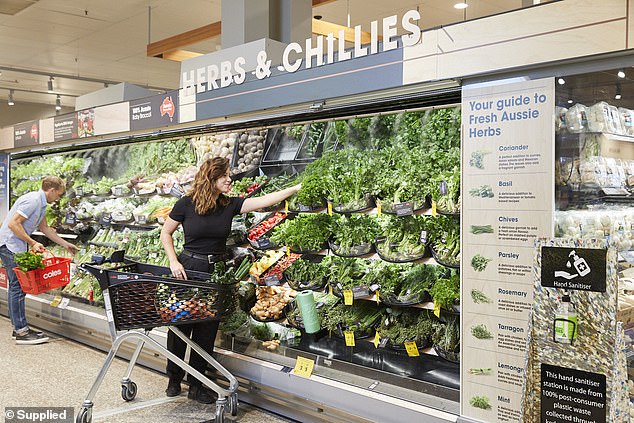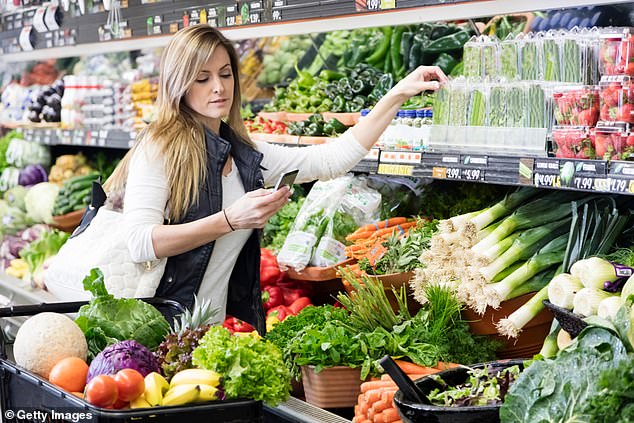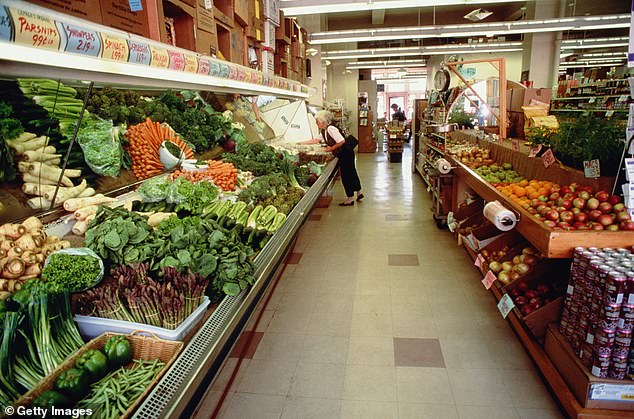Revealed: The reason your basil’s faulty! Why supermarket herbs die after you buy them
- Experts say herbs bought at the supermarket are not designed to survive
Even for those with green fingers, keeping herbs alive in pots can be quite a challenge.
But it seems it has little to do with gardening skills, as the Mail can reveal that supermarket herbs are designed to only thrive until you get them home.
According to experts, herbs grown in pots for large retail chains are actually immature seedlings falsely presented as mature plants that will not last long in a home environment.
To test the theory, the Mail bought potted plants of coriander and basil from Tesco, Asda, Morrisons, Sainsbury’s and Waitrose and cared for them for a week according to the instructions on the packet.
We found many that had already collapsed when we removed them from their plastic packaging, and some had wilted, turned brown and/or lost their leaves within a few days.

According to experts, supermarket herbs are grown to look nice on the shelves, rather than to survive at home (archive photo)
Kendall Platt, gardening expert at Adventures With Flowers, said: ‘Supermarket herbs are grown to look pretty on the shelf, they’re not grown to survive. If they die, you have to buy a new one.’
Herbs sold in supermarkets are grown in heated greenhouses under ‘ultimate’ conditions, often receiving 18 hours of artificial light per day.
‘This means they grow quickly, but their size is deceptive because they are still immature plants.
“They grow to size in about three weeks, but you’re essentially buying a pot full of seedlings,” says Liz Alderson in her gardening blog The Herb Guide.
On the supermarket shelf, the weak stems of the immature herbs are held up by plastic wrappers, which also bring out the most lush looking leaves, making them look healthy. But as soon as you remove the wrappers, the weak stems can quickly collapse.
In addition, the seeds are sown too close together and not separated when they germinate, causing the seedlings to compete with each other for space.
Mrs Platt said: ‘In one pot you don’t get one plant, you can have 50 little plants all competing for nutrients. There’s not enough in the soil to keep them alive.’

The weak stems of the immature herbs are held up by plastic wrappers, which also bring out the most lush looking leaves, making them look healthy – until they are unpacked (archive photo)

Herbs are also outdoor plants, which means it’s difficult to maintain their optimal conditions indoors (file photo of a produce section in a supermarket)
Because seedlings in greenhouses are exposed to so much artificial light, the plants grow tall and develop small leaves, as they do not have to work hard to capture the light they need for energy.
But once you get them home, there probably isn’t much light to be found on even the sunniest windowsill, so the herbs struggle to get the energy they need.
Mrs Platt adds: ‘Herbs are real outdoor plants and it is difficult to create the conditions they need indoors.
“People overwater them when they start to wilt, which can cause them to drown.”
Andrew Opie of the British Retail Consortium, which represents supermarkets, said: ‘Retailers carry out shelf-life trials to ensure [potted herbs] be fit for the intended purpose and of the highest quality for the customer.
‘Herbs are also grown in greenhouses where light and heat are used to grow herbs in optimal conditions, allowing retailers to offer British potted herbs all year round.’
